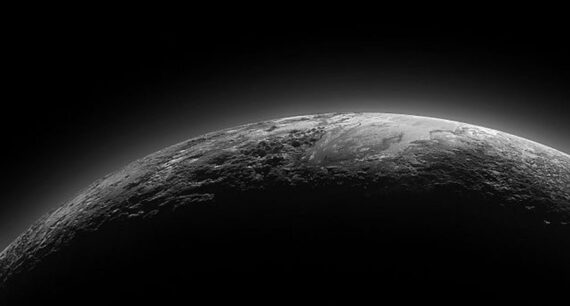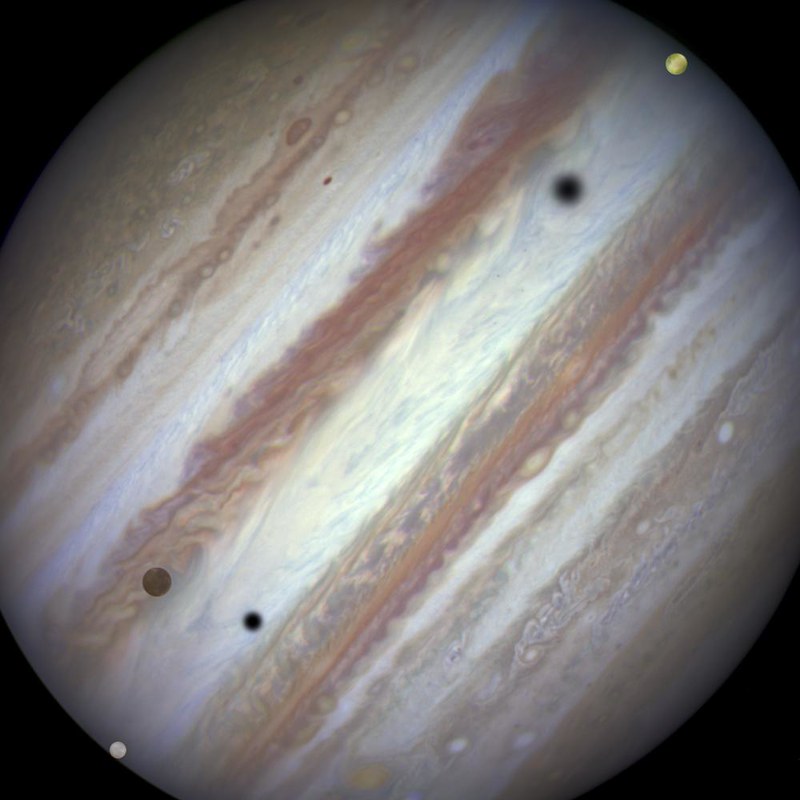
This week in what’s up is an astronomy phenomenon called an occultation. To put it simply, an occultation is when some object passes in front of another, such as a background star. This method has been used in astronomy for a long time, mainly to refine the orbits of different planets and asteroids. You can actually see occultations for yourself with a telescope or binoculars.
Another way to use occultations for science is to explore the atmospheres of planets, such as what astronomers did with Pluto. A stellar occultation proved that Pluto had an atmosphere in 1988. This discovery was made with the Kuiper Airborne Observatory, the predecessor to SOFIA.
Additionally, the New Horizons spacecraft planned to pass by Pluto when its atmosphere was most active, and it did, in 2014, capturing images of the atmosphere during the spacecraft’s flyby.
Scientists used later occultations to monitor the atmosphere of Pluto as it shrunk, and some citizen scientists even contributed. Pluto passing in front of a star allowed the atmosphere to be separated from the planet and also allowed for a better solution to its orbit by timing how long the star’s light was blocked and doing some math.
Telescopes from the (soon to be retired) SOFIA infrared telescope in its 747 to the commercial Unistellar eVscope were used to observe different occultations. These observations were done in 2011, 2016, and 2018. SOFIA observed an occultation in 2011, and it was challenging because the orbit prediction was not completed until two hours before the airplane took off, which required changing the flight plan. SOFIA was designed to track events such as occultations that move over the surface of the Earth at a relatively fast speed, allowing for more observation time.

The team on the next occultation I’ll talk about only gathered data for ten seconds. That team from the SETI Institute used a Unistellar eVscope along with a much bigger 14-inch Schmidt-Cassegrain in California to observe the 2018 occultation. They were joined by other teams in North America, using equipment provided by a French observatory. All of the telescopes combined to produce data on Pluto’s atmosphere. The eVscope has been used for even more citizen science since then.
Now about viewing an occultation for yourself. There are several occultations you can view in the month of May 2022 using a backyard telescope. One has already happened; Ceres was a tenth of a degree from the Moon on May 1. On May 19 at 0800 UTC, Vesta will be within seven-tenths of a degree of the Moon. On May 22 at 1800 UTC, Mars will be within nine-tenths of a degree from the Moon. And on May 24, Uranus will be within five-hundredths of a degree of the Moon at 22:00 UTC.
All of these events would be true occultations where the Moon covers these different objects if the observer was anywhere on Earth but North America. However, they are still worth seeing because they will get super close to the Moon.
Another type of occultation is a transit, where an object passes in front of another but does not completely cover it. A transit that you can see regularly is the passing of the four Galilean moons – Io, Callisto, Ganymede, and Europa – in front of the disk of Jupiter.
These transits are best viewed in a small telescope but can be seen in binoculars. And they happen often enough that there may be several during the night where you are. We recommend the Shallow Sky website to see when transits are happening and will have a link to their Jupiter page in our show notes for this episode.
Next week, you can also look forward to the Moon, which will be at perigee on May 14, making its angular size a few percent bigger and causing larger tides.
Remember, get outside and look up, weather permitting, of course.
More Information
Discovering Pluto’s Atmosphere (Sky & Telescope via ADS)
SOFIA successfully observes challenging Pluto occultation (Astronomy)
Capturing an Occultation and a Snapshot of Pluto’s Atmosphere (SETI Institute)




 Join the Crew!
Join the Crew!
 Escape Velocity Space News
Escape Velocity Space News
0 Comments